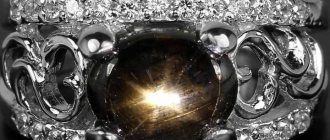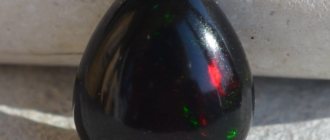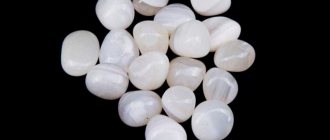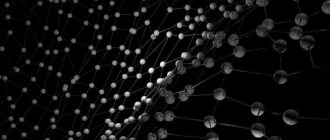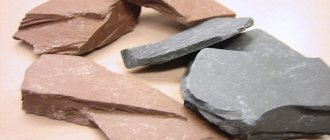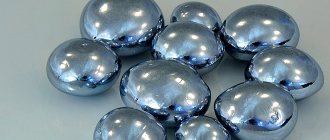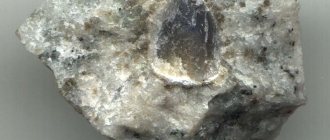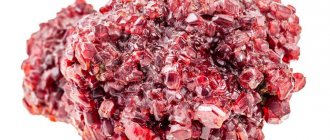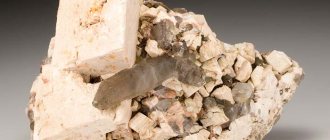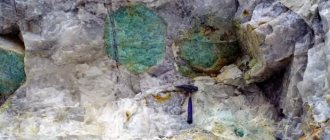For a long time, transparent sapphire was considered not as an independent piece of jewelry, but only as a substitute for diamonds. However, in this parameter it has now been surpassed by synthetic minerals. Therefore, it is not used often, at least in our country. In the West, white sapphire is very popular, apparently, this is due to its natural origin.
White sapphires
Historical reference
Unfortunately, there are no stories that tell the story of the white sapphire. This may be because in ancient times it may have been mistaken for diamond or rock crystal, which were widely used in the ancient world.
The term “sapphire” itself, without a prefix, is applied to blue stones. Other types of gems were called by two-word terms, the first part of which was the word “oriental”.
So, the eastern amethyst was actually purple, the eastern emerald was green, the eastern topaz was yellow sapphires. Padparadscha was called the oriental ruby, and the pink sapphire was known as the unripe ruby.
Star sapphire was found under the name Asteria and was often referred to as the “Stone of Great Destiny.” Some cultures believed that the formation of three rays on the surface of a star nugget represented “Faith,” “Hope,” and “Destiny” (or “Destination”).
Although many subspecies of sapphire were known under other names, written sources testify to their use in Ancient Greece, Ancient Rome, Egypt and the Etruscans.
Varieties and colors
Sapphires have a wide range. A blue crystal is considered a classic. The remaining shades are “fantasy”.
Colors
There are yellow, orange, green, colorless, pink, black specimens. In this case, the description of the stone includes an indication of color.
- Blue. A classic but rare sapphire color. More often it is a mineral with bluish, grayish tints. A specimen containing up to 15% of other shades is considered blue. If it is more, the stone is classified as fancy with a double name (for example, yellowish blue). Color is created by titanium and iron: the more, the thicker the shade. However, an excess of deep blue depreciates the value of the gem. The most valuable is the velvety cornflower blue Kashmir sapphire of moderate intensity.
Blue sapphire
- Yellow. A rare variety, yellow sapphire is slightly cheaper than blue. Nickel creates a range of shades from yellowish to amber or orange. Lightly colored specimens are considered transparent.
Yellow sapphire
- Black. Half or fully opaque lustrous stone. It's actually blue, but the saturation creates the illusion of black.
Black sapphire
- Blue. Expensive valuable gem. Blue sapphire almost always comes from India. Specimens from Sri Lanka are distinguished by their milkiness and resemble moonstone.
Blue sapphire
- White (leucosapphire). Color is created due to the absence of impurities. Leucosapphire imitates a diamond, reducing the cost of jewelry without sacrificing aesthetics and quality. Natural white sapphire is rare and is often the result of heating colored light sapphires. White sapphire
- Green. In fact, green sapphire lacks this color. Under a microscope, it is noticeable that the greenery forms an interweaving of yellow and blue segments. The colors come from cobalt and magnesium.
Green sapphire
- Pink. The tint is created by manganese. The delicate color does not obscure the shimmer in the sun. Due to its affordable (compared to diamonds) price, pink sapphire is more popular than a similar diamond. Americans and Japanese especially love jewelry with this corundum. Little known in Russia.
Pink sapphire
- Padparadscha. The pink-orange crystals are called padparadscha, the shade of a lotus flower. They are not present in the available assortment; the significance of this stone is especially understood in the East.
Padparadscha
- Violet. The purple color is created by vanadium. Known as "oriental amethyst". Mined in Australia, rare.
Purple sapphire - Grey. It is of value only with the asterism effect.
Gray sapphire
Varieties
Connoisseurs appreciate types of multi-colored sapphires, united by some kind of “zest”.
- Star-shaped. Star sapphire is so named due to its unique effect - asterism. A beam directed at the crystal reveals a star on the surface: 6- or 12-rayed (double asterism). Rays are created by rutile. The star mineral is processed as a cabochon: this is how the effect is manifested to the maximum. The best specimens are mined in Thailand, the rarest and most valuable are green. The clarity of the star shape increases the price, while blurriness (when there is little rutile) reduces it.
- "Cat's eye" Named because of the stripe that runs across the stone and makes it look like a cat's eye. Parallel needle inclusions create rutile and other minerals. Processed cabochon.
- Alexandrite. Alexandrite sapphire is a stone that changes color under different lighting: green in daylight and reddish-violet (purple) in artificial light.
- Songea, Tunduru. Particularly pure varieties of sapphire with a rich palette. Often with an asterism effect. Named after deposits in Tanzania. Rarely larger than 1.5–2 carats, but so perfect that they fetch from $2,000 per carat of processed stone.
- Declassed. Declassed sapphire - stones of any color, but of low quality: opaque, dark, contaminated with inclusions.
Physicochemical characteristics
Leucosapphire, Sri Lanka
Leucosapphire belongs to the corundum group and its chemical composition is aluminum oxide. The hardness of this stone on the Mohs scale is 9. Thanks to such high hardness, as well as brilliance, the gem is easy and convenient to cut and polish.
What distinguishes leucosapphire from a similar diamond is its lack of light dispersion ability. It is not capable of dividing the flow of light into elements of the spectrum, and color flashes do not appear in it. If a cut leucosapphire is illuminated with bright rays, it will shine with beams of light.
The specific gravity of leucosapphire is 3.90-4.10 g/cm3. Refractive index 1.757-1.778. Birefringence is 0.008-0.009.
The crystals are colorless, transparent or translucent, with a glassy luster, the faces are hexagonal, bipyramidal and prismatic, sometimes pinacoidal, tabular and rhombohedral. Leucosapphire is fragile, has a trigonal system, imperfect cleavage, uneven or conchoidal fracture.
Birefringence, white. Pleochroism is not typical. Luminescence is red-orange.
Characteristic features of the stone are anisotropy, uniaxiality, as well as the presence of cracks and gas-liquid inclusions.
How to wear and care
The hardness of the mineral is high, but careful handling will not hurt.
- Products made of gold or platinum (not silver) are cleaned with a soft cloth or brush in a weak solution of washing powder and rinsed.
- A cleaning mixture of baking soda, salt and bleach diluted in warm water is effective. Afterwards, rinse thoroughly.
- Place the jewelry in the soapy solution in the sun for 2–3 hours.
- If the gem is glued, cleaning with an aqueous solution is impossible. It is better to take the jewelry to a jeweler.
- The gem should not be heated too much. If he is ennobled, he will not survive another similar procedure.
- Ammonia (4–6 ml per 180–210 g of water) will refresh jewelry.
Rings, bracelets, and earrings are removed before doing housework, going to the pool, solarium or the beach.
In the box, corundum is stored separately from others so that less durable stones are not damaged.
Synthetic leucosapphire
Artificial leucosapphire
Scientists have learned to grow synthetic white sapphire in an artificial environment. The technologies for producing this jewelry were first discovered at the beginning of the 20th century.
The most common industrial methods for growing leucosapphire include:
- Verneuil's method. Typical crystals have a diameter of 25 and a length of 100 mm.
- Czochralski method. Crystals with a diameter of up to 150 and a length of up to 400 mm are obtained.
- Kyropoulos method. Currently, crystals with a diameter of 350, a height of 500 and a weight of up to 100 kg are grown using this method on an industrial scale. The process of growing 1 crystal lasts up to a month. The main advantage of the method is the production of especially pure single crystals used in microelectronics.
- Stepanov's method. It involves drawing out profiled products from the melt. Allows you to obtain crystals of any cross-section: rods, ribbons, pipes up to 1 meter long. The main method for the industrial production of blanks for watch glasses, optical elements, and structural materials.
Household use
There are several proprietary methods for producing artificial stones. Some of them - the Kyropoulos method, the Czochralski method, the Musatov method, the Stepanov method, the Bridgman-Stackburger method - are based on growing crystals from molten compounds of chemical reagents by exposure to different temperature conditions.
Artificial leucosapphire is produced on an industrial scale. It is primarily used to produce wafers for light-emitting diodes (LEDs) and silicon sapphire (SoS) chips.
The magical properties of leucosapphire
Ring with leucosapphire
Leucosapphire attracts wealth into the home. He can help suspicious people. The mineral is an emblem of justice, condolences and sincere love. Helps in revealing talent.
Since ancient times, leucosapphire has been an emblem of fidelity. Charms made of snow-white stone accumulate positive energy and transfer it to another when the wearer changes.
The crystal bestows courage and masculinity, can help keep the owner from insinuations, and cleanse the soul. The mineral enhances the thirst for knowledge and controls emotions. Gives the owner prudence.
Leucosapphire is also called the stone of nuns.
The precious gem is the protector of prisoners; it can help them endure imprisonment and free them from shackles.
The crystal gives strength and courage to the male half of humanity and can help in achieving goals. Gives ladies grace and femininity.
Leucosapphire is framed with silver, gold and platinum. It harmonizes perfectly with other minerals.
Under no circumstances should a crystal with cracks or clouding be used. This will lead to illness, loss of property, and deterioration in communication with people.
Talismans, amulets, amulets
Pendant with leucosapphire
The occult capabilities of the mineral have long been known. People who choose leucosapphire as a talisman want to receive the following gifts from it:
- Foresight. White sapphire gives the owner insight and intuition, helping to make more thoughtful and informed decisions. It is often called the “stone of wisdom.”
- Organized. This refers to order in thoughts, not in the room. The owner of the gem simply analyzes the information and finds answers to his questions.
- Completing tasks. White sapphire gives strength to accomplish tasks. It protects the wearer from negative emotions. It is used when a person starts a planned project from scratch.
- Unlocking energy. Sapphire reveals hidden talents and skills. Reduces the effects of stress.
- Pioneer. Anyone who starts a business from scratch strives to make leucosapphire a talisman, since it helps to realize everything they have planned.
Medicinal properties
Leucosapphire ring
In ancient times, the stone was ground and taken internally in powder form. In this way, heart disease, inflammation, dysentery and syphilis were treated. They were also treated for mental disorders.
Currently, the stone is used to treat insomnia, endocrine diseases, the circulatory system, and helps with asthma attacks. Treats stomach pain and kidney stones. Reduce blood pressure, treat the spine and joints.
Recommended for people with genetic and gynecological diseases, and hormonal imbalances. Helps with problems with bone tissue. For heart pain and asthma, you should wear a ring on your left hand.
Indians treat eczema, epilepsy, and diseases of the pelvic organs in women. Treat eye diseases. The stone must be close to the skin to have an effect. Rings or pendants with stones are used for treatment.
Areas of application
Thanks to its unique combination of properties (high hardness, strength, melting point, chemical and radiation resistance, optical transparency), sapphire is in demand in almost all areas of science and technology.
Two main areas of application of leucosapphire have emerged: structural and optical material.
Artificial sapphire single crystal
Historically, synthetic sapphires have been used by jewelers through various operations to impart different shades to the stones. Then they began to use sapphires as watch stones (and now as instrument stones); due to their bright red color, the most common use of one of the varieties of sapphire is ruby.
With the development of technology, they learned to produce crystals with a diameter of up to 40 mm and active production of practically scratch-resistant sapphire watch glasses began. For many, it will be good news that the majority of sapphire crystals for Swiss watch companies are grown in Russia. Nowadays, high-end mobile phones have sapphire screens.
- Due to its wear resistance, leucosapphire is used as wire drawing dies, tips of measuring probes, nozzles for sandblasting and waterjet cutting, yarn feeders in weaving factories (Russia supplies more than half of the world market), and the pass rings of expensive spinning rods are made of polished sapphire. The guides of some modern machines are also made of leucosapphire. Sapphire friction and rolling bearings are known.
- High dielectric properties combined with radiation resistance determine the use of sapphire insulators, incl. and at nuclear power plants.
- Cutting tools: scalpels for surgery, cutters for fine and fine turning of aluminum and copper alloys (never seen in practice), knives for cutting paper in industrial plotters.
- Chemical resistance allows the use of sapphire crucibles, beakers, capillaries, dies and punches in highly clean industries. Pumps for chromatographs and drug dispensing are equipped with sapphire plungers.
- In medicine, due to its chemical resistance, low coefficient of friction, high hardness and strength, as well as good affinity for bone tissue, leucosapphire is used as implants and artificial joints, microscalpels.
- Optics. Due to its high wear resistance (hardness is second only to diamond), it is used in watch glasses and mobile phone screens (servicemen say that some ladies still scratch the screens with their trousers). Due to its high optical transparency combined with strength and a melting point of 2050 C, sapphire began to be widely used as protective glasses in furnaces, cryostats, bathyscaphes, spacecraft, fire sensors, devices for reading barcodes, light guides, laser elements, etc.
- Microelectronics. Sapphire substrates are used for the epitaxy of semiconductor films and the manufacture of integrated circuits, the manufacture of pressure, humidity, mass sensors, various detectors; the production of laser diodes and LEDs is actively developing.
- Souvenir products. Shot glasses, ashtrays, balls, chess, medallions, knives. I saw a custom-made sapphire saber about 60 cm long.
Artificial sapphire
Despite the unique combination of physicochemical properties, the widespread use of leucosapphire is limited. First of all, this is a very expensive material. Growth processes take from several hours to several weeks. All this time it is necessary to maintain a temperature of more than 2000 C, which results in enormous energy costs. Expensive hardware design.
Physical disadvantages are the fragility of products (the flip side of hardness), the use of a large number of expensive diamond tools for processing. Another important feature is that sapphire is an anisotropic single crystal, and its properties in different directions are very different. Processors feel this well with their hands - some directions in the crystal are processed only by certain grades and grain sizes of diamonds.
Products and jewelry with leucosapphire
Leucosapphire Ring White Gold
Sapphires are usually found in cylindrical, flat or double hexagonal shapes. Jewelers focus on emphasizing the white color of the stones and increasing the shine of the edges.
Another priority when cutting is to hide the natural imperfections of the nuggets. Known as typical inclusions, they appear in a mineral at the moment of its formation.
During processing, jewelers focus on hiding them, making the inclusions invisible to the naked eye.
Given their rarity, it can be difficult to find jewelry inlaid with white sapphires. They are prized above all for their pure color. The most common items on sale are earrings and necklaces with white stones.
Storage and care
Sapphire itself is not fussy about caring for, however, since the stone is expensive, jewelry with it should be taken care of.
The mineral is not afraid of mechanical impact, but it is not recommended to allow it to fall or be compressed. You should also be careful with chemicals and ultraviolet light, which can damage the color of the stone. At home, during sports and active exercise, jewelry should be removed to prevent the stone from coming into contact with sweat.
Store products separately from other minerals and metals. For cleaning, use clean water diluted with a small amount of ammonia.
How much does leucosapphire cost?
Natural leucosapphire 4.90 carats
High-quality leucosapphire weighing from one to two carats starts at $300 per carat. If you're lucky, you can find a good two-carat one for $1,500. The basic price of natural leucosapphire is $1,000 per carat.
With a further increase in the mass of the stone, while maintaining ideal quality, the price of the product does not increase too significantly. A 7-carat white sapphire typically sells for $1,250 per carat. However, a ten-carat leucosapphire easily reaches $2,000 per carat and sells for $20,000.
Leucosapphires weighing more than 10 carats are extremely rare. Their final cost is determined not by compliance with standards, but by market conditions.
Production
Deposits of sapphires without impurities are located in different parts of the planet, not concentrated on a specific continent. As, indeed, are many minerals and minerals from the depths of our planet. Among the deposits there are stones of different sizes, but most often they are small. The largest leucosapphire was found by radiologist Steve Mayer in North Carolina (more than 3.5 thousand carats). Moreover, for some time the scientist had no idea about the value of his find, using it as office supplies.
The first transparent corundums were found in Southeast Asia. Other deposits are known in the USA, Brazil and Australia. Read more about where sapphires are mined →
Now they are making artificial versions. Of course, they are much cheaper, but at the same time they are quite high quality, including in terms of strength and external characteristics. However, if you want to use it as a talisman or amulet, it is better to prefer the real one. About hydrothermal sapphire →
How to recognize a fake
It is almost impossible to distinguish the original from a synthetic stone with the naked eye. Reliable data can only be obtained through professional expertise.
The only guidelines for buyers to understand whether it is natural leucosapphire are:
- The presence of tiny defects on the gem. A natural crystal always has inaccuracies, gas inclusions, and microcracks.
- The cost of the jewel. A fake stone differs from a natural stone in its relatively low price.
Important!
It is extremely difficult to find natural leucosapphire on the open market. This is a very rare mineral, under the guise of which high-quality fakes are often sold.
Who is suitable for leucosapphire from the zodiac signs?
Leucosapphire
This mineral is universal; there are no zodiac signs for which it would be completely contraindicated. It is best suited for Aries, Sagittarius, Aquarius and Virgo.
- With the help of white sapphire, Aries will be able to better control their emotions, become calmer, and moderate their anger and irritability.
- Sagittarius, under the influence of the gem, will become more courageous, decisive, and judicious. Natural stone will help accumulate their energy in the right direction to achieve their goals.
- Aquarians, when regularly wearing the mineral, will reveal their talents and abilities. They will have confidence in their own abilities, which they lacked to achieve what they wanted.
- With the help of such a talisman, Virgos will be able to develop their communication skills and get rid of excessive adherence to principles, arrogance, and stubbornness.
White sapphire combines quite harmoniously with the energy of Gemini, Cancer, Libra, Scorpio and Pisces.
- This mineral will bring good luck in business and happiness to Gemini.
- For cancers, it will have a positive effect on the body and health.
- For Libra, the gem will bring a stable psycho-emotional state and determination.
- Leucosapphire will protect Scorpios from constant stress and overwork at work. It will give the representatives of this sign prudence, calmness, and compliance.
- For Pisces, white sapphire will help unleash their creative potential and attract good luck into their lives.
For other zodiac constellations, white sapphire will be a beautiful decoration, but from an energetic point of view it will manifest itself as neutral.
Interesting facts about the stone
- Leucosapphire is known for its exceptionally high hardness as well as its resistance to thermal stress.
- The world's largest producer of artificial white sapphires is Russian. Some specimens grown by her reach a weight of 300-350 kilograms.
- Colorless sapphire is the second hardest stone after diamond.
- This stone is exceptionally resistant to ultraviolet rays.
- Leucosapphire is absolutely pure corundum, which contains only oxygen and aluminum atoms; due to this property, the stone has no color or even any faint shade. For the same reason, leucosapphire is very rare in nature.
Composition of white sapphire
The fewer impurities in corundum, the less color. If it is absolutely transparent, it is pure aluminum oxide. But this doesn't happen often. Usually the stone still has some kind of tint, bluish or reddish, sometimes gray - depending on what kind of metal there is: chromium, titanium or iron. Therefore, colorless and pure natural sapphire is highly valued, although not as much as its main ally, diamond.
